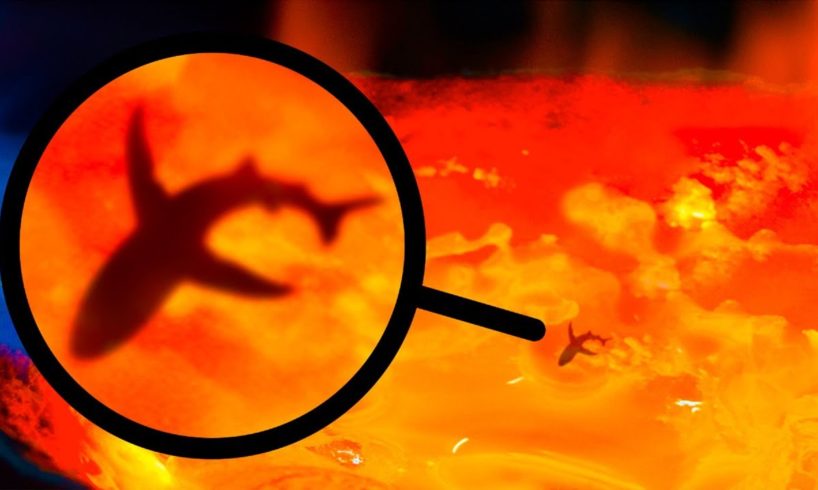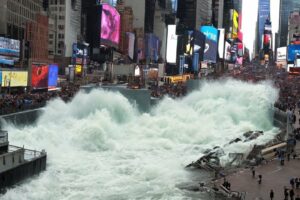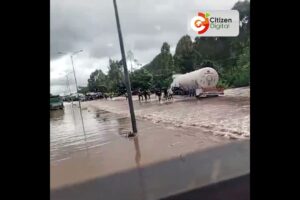
Most people imagine volcanoes as scary gigantic mountains covered with blazing-hot magma and erupting ash. But in fact, more than 80 percent volcanoes on our planet are situated on the seabed, and there creatures that live on their bottoms. Are you ready to meet these scary real-life monsters?
If you have a look at the underwater volcano situated about two miles below the surface, the conditions there will terrify you, if not kill you. The pressure of water is enormous, the water itself contains many heavy metals, hydrogen sulfide – poisonous, flammable, and corrosive gas, and other toxic substances. Despite these hostile surroundings, more than 400 species live around the volcanoes.
In the Arctic Ocean, far away from any traces of civilization, in ice-cold dark waters, there are five active volcanoes. But unlike typical volcanoes, these formations spew out methane gas and warm mud. They are mud volcanoes.
In 2013, a multinational group of scientists decided to research the mud volcanoes in the Beaufort Sea using the Canadian icebreaker CCGS Sir Wilfrid Laurier. Soon the first results were ready: the mud volcanoes turned out to be real giants, 650 to 1200 yards across and as high as 100 ft. The slopes and the tops of the mud volcanoes are covered with colonies of tube worms. They grow slowly, and it may take them from 170 to 250 years to reach such length. Tube worms are exceptionally long-lived.
Today, scientists are more worried about the Yellowstone Supervolcano. The formation got its name due to its power to produce unbelievably violent eruptions. The crater of this volcano is 34 by 45 miles in size. And the destructive force of the volcano is so huge that according to scientists’ calculations, 90,000 people would die instantly as soon as the volcano erupted. Scientists have many equipment set all over the National Park and they assure people that were the volcano to erupt, they would be able to predict this weeks in advance and evacuate those in immediate danger.
Music: Ticker-Silent Partner
Weirder Stuff – Geographer
Cloud Wheels, Castle Builder – Puddle of Infinity
Back of the Room Hang – Jingle Punks
https://www.youtube.com/audiolibrary/music
TIMESTAMPS
The 1980s discovery 1:07
Underwater volcanoes 1:45
Mud volcanoes 3:12
The 2013 research 4:54
The Beaufort Sea worms 5:55
Yellowstone Supervolcano 7:37
SUMMARY
-In 1980s scientists discovered unique bacteria that could survive and even thrive above water boiling temperatures.
-Despite super hostile surroundings, more than 400 species live around underwater volcanoes, and they’re not only unicellular organisms, but shrimps, worms, sea snakes, crabs, and others.
-Mud volcanoes are quite different from the ones everybody knows about. They form around vents in Earth’s surface which release gas.
-In 2013, a multinational group of scientists decided to research the mud volcanoes in the Beaufort Sea using the Canadian icebreaker CCGS Sir Wilfrid Laurier.
-The Beaufort Sea worms spend their life in the complete darkness and have no stomach, anus, or eyes. Their food is gases released by the volcano.
-Yellowstone Supervolcano got its name due to its power to produce unbelievably violent eruptions. The crater of this volcano is 34 by 45 miles in size.
Subscribe to Bright Side : https://goo.gl/rQTJZz
—————————————————————————————-
Our Social Media:
Facebook: https://www.facebook.com/brightside/
Instagram: https://www.instagram.com/brightgram/
5-Minute Crafts Youtube: https://www.goo.gl/8JVmuC
—————————————————————————————-
For more videos and articles visit:
http://www.brightside.me/
source







Are there volcanoes in the countries where you live?
Your mom
Propaganda.
I like bright side
Pause here for bald guy 1:28
that son was terrible
Types of sharks can live in lava
Nothing
Maybe bowser
انت جذاب هاي مو خدعتك🖕🏻🤬
at least the temperature drops, i get hot in 60 degrees.
please use the metric system like 95% of the world
hi i am a big fan
ボルケーノ!
Typhoon and Titans of the Greek Mythology lived there, looking for a chance to escape and revenge against Zeus
I think volcanoes are extraordinary functions of our Earth. Being aware of what they can do, even if you do not live in a danger zone from them, will educate you how they produce new land, climate change events and even extinction level events will get you to thinking about what you would do if such an event were to ever happen. And it will happen again in the future.
Phew myanmar don't have this danger-
Ladies and gentlemen
The thumbnail shows that pyro shark is real
SIKE ITS HOT VOLCANO DOLPHINS CAN LIVE THERE OH NO,😰
What a great video..hey..your whitty too!!
i like your channel you maybe helping and am bad at scines😀😀
it would be cool if theres like some kind of mutated magma fish there
Whenever I come across this channel I just dislike it and go
Nope mam my world don’t have volcanos.
Wow I like it!!!
That was cool!!!
For you🖍🌫🥺😅😝😢
is sea bear
Yep there's volcanos in Philippines.
I am watching this because I need it for my project
SHARK mybe?
Satan lives at the bottom of volcanos🌋who else?
Yes in India one 🌋